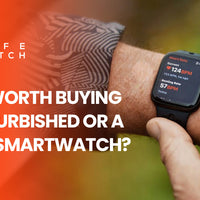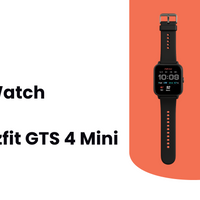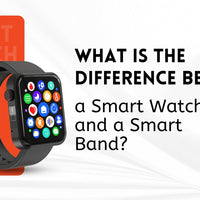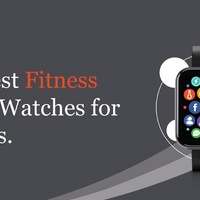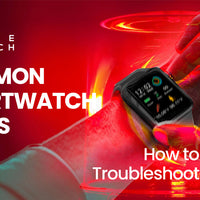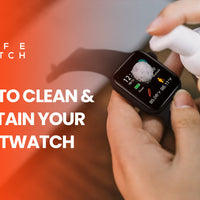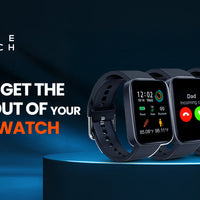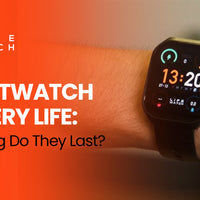Summary Points
- Smartwatches should be evaluated based on health tracking, connectivity, battery life, compatibility, and comfort.
- Ensure the device is compatible with your smartphone’s operating system and supports your preferred apps.
- A minimum 24-hour battery life and a water-resistant, durable build are essential for long-term usability.
- Budget smartwatches like Life Watch offer essential features without compromising core functionality.
- Real-world performance, warranty policies, and ease of use should guide final purchase decisions.
What to Look for When Buying a Smartwatch: A Complete Checklist
Smartwatches have evolved into versatile tools that integrate seamlessly into daily routines. From monitoring health metrics to delivering instant notifications and facilitating on-the-go payments, these devices offer a blend of convenience and functionality.
However, choosing the right smartwatch requires a thorough understanding of what features align with personal or lifestyle needs. This checklist outlines the critical elements to consider before making a purchase, helping buyers navigate the growing variety of smartwatches available today.
Essential Features
Smartwatches vary significantly in terms of functionality. The following features are essential for ensuring a balanced experience between health monitoring and smart connectivity.
1. Health & Fitness Tracking
Health tracking remains one of the top reasons for smartwatch adoption. Devices that monitor physiological parameters can play an important role in lifestyle management.
Key features include:
- Heart Rate Monitor: Provides continuous or on-demand tracking of cardiovascular activity.
- Sleep Tracking: Analyzes sleep cycles to help users improve rest quality.
- SpO2 Sensor: Monitors blood oxygen saturation, important for assessing respiratory health.
- Stress Monitoring: Evaluates heart rate variability to detect signs of stress.
Life Watch includes core health tracking capabilities such as heart rate monitoring, step counting, and sleep analysis, which are suitable for everyday users seeking reliable wellness data.
2. Connectivity
A smartwatch should function as an efficient extension of a smartphone. When evaluating connectivity, look for:
- Bluetooth and WiFi Support: Enables seamless syncing with smartphones and apps.
- NFC Compatibility: Allows for contactless payments using platforms like Google Wallet or Apple Pay.
- Notification Management: Ensures quick access to texts, calls, and app alerts.
Life Watch offers Bluetooth connectivity and is compatible with both iOS and Android platforms, streamlining the user experience for daily notifications and app syncing.
3. Battery Life
Battery longevity significantly impacts user satisfaction. Frequent charging disrupts usability and can be a dealbreaker for many.
Buyers should seek:
- At Least 24 Hours of Battery Life: Suitable for standard daily use.
- Extended Battery Options: Ideal for outdoor enthusiasts and heavy users.
- Charging Mechanism: Magnetic or wireless chargers improve convenience.
Real-world usage reviews provide a more accurate measure than manufacturer claims. Life Watch is equipped with a long-lasting battery that supports multi-day usage on a single charge, reducing downtime and frequent recharging.
4. Compatibility
Compatibility determines how well the smartwatch integrates with a user's smartphone and digital ecosystem.
Important considerations include:
- Smartphone Operating System: Apple Watches are exclusive to iPhones, while most Android-compatible devices work with both systems.
- App Ecosystem Support: Apps such as Strava, Spotify, or Google Fit enhance smartwatch utility.
Life Watch is designed for broad compatibility with iOS and Android, providing flexibility across devices and platforms.
5. Comfort & Design
Smartwatches are worn for extended periods, making comfort and durability key factors in purchase decisions. Life Watch features a sleek, water-resistant design and ergonomic silicone straps, offering both functionality and style for daily wear.
A smooth transition into aesthetics involves evaluating:
- Ergonomic Fit: Lightweight designs and adjustable straps ensure daily comfort.
- Material Quality: Durable casings and scratch-resistant screens such as Gorilla Glass are recommended.
- Water Resistance: A minimum rating of 5ATM allows for safe use while swimming or showering.
6. Ease of Use
A smartwatch’s usability depends on both its interface and its supporting app.
When reviewing ease of use, consider:
- Touchscreen and Button Navigation: Should be responsive and intuitive.
- Companion App Experience: Simplifies data interpretation and goal tracking.
- Customization Options: Adjustable watch faces and quick-access widgets enhance user satisfaction.
Life Watch includes an intuitive interface and a companion app, simplifying health data visualization and device personalization.
Conclusion
The right smartwatch offers a seamless blend of health monitoring, connectivity, battery life, and comfort, all within a reasonable price point. For most users, choosing a device that aligns with their lifestyle and smartphone ecosystem is more important than brand prestige or novelty features.
For shoppers seeking an affordable and reliable smartwatch, Life Watch stands out as a dependable option. With its focus on core wellness tracking, long battery life, and everyday comfort, it serves as a smart alternative to premium-priced competitors.






